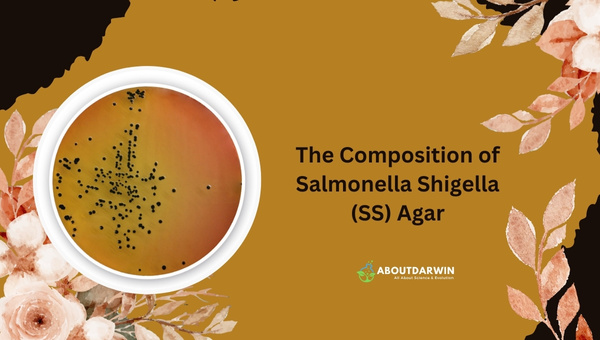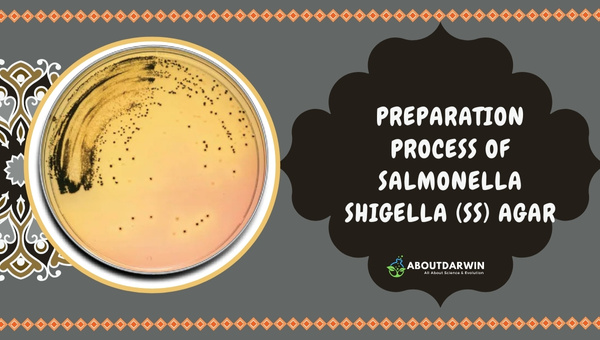Physical Address
304 North Cardinal St.
Dorchester Center, MA 02124
Welcome! You’re in the right place if you’re interested in delving into the fascinating world of microbiology or just curious about bacterial culture medium, especially the Salmonella Shigella (SS) Agar.
This guide will provide you with an extensive understanding of every aspect related to SS Agar – its composition, principles that drive it, purpose, and uses across different applications and steps involved in its preparation.
If we keep it simple – Salmonella Shigella (SS) Agar is a selective and differential culture medium usually used for isolating Salmonella and Shigella species from a sample specimen.
The specialized ingredients present in SS Agar help promote the growth of such bacteria while inhibiting other microorganisms – all thanks to the unique principle behind this fantastic scientific invention.
Contents
Salmonella Shigella (SS) Agar is a selective and differential medium primarily used for the isolation of pathogenic gram-negative bacteria, including Salmonella and Shigella species.

It consists of various ingredients, each playing a role in fostering the growth or differentiation of these bacteria. Let’s delve into the essential components and their purposes.
The key elements that make up the SS Agar comprise:
Here’s how each component aids in separating strains of targeted bacterial species:
The concerted action of these components allows SS agar to be selective (facilitating the growth of specified bacteria while inhibiting others) and differential (enabling clear visual variances amongst growing colonies).
Also Read: Uncovering the Best: GenealogyBank vs Newspapers.com
The SS Agar or Salmonella-Shigella agar is an essential bacteriological medium used in microbiology labs, specifically designed to recover highly infectious bacteria like Salmonella and Shigella from a variety of clinical specimens.
It is a how-to guide for not only identifying these bacteria but also differentiating one from the other based on distinct biochemical processes.
Salmonella-Shigella (SS) Agar operates on two essential principles:
These principles work hand in hand to isolate specific bacteria strands while preventing the growth of others that may create interference during testing.
Also Read: Unlock Your Roots: Explore Free Genealogy Websites Today
Salmonella Shigella Agar is highly utilized in microbiology for a variety of purposes. It’s primarily used in bacterial culture testing and scientific research due to its selective and differential properties. Let’s dive into these areas of use:
Salmonella Shigella Agar is employed extensively in clinical microbiology laboratories all over the world. It serves a crucial role in detecting gram-negative bacteria, notably Salmonella and Shigella, from diverse specimens such as stool, urine, or wound swab samples.
Researchers also heavily utilize SS Aagar while conducting scientific projects targeting disease-causing pathogens where the identification or detection of bacteria forms an integral part of their studies.
Also Read: Who Owns MyHeritage? Unveiling the Ownership Mystery!
Preparing SS Agar requires a series of careful steps in order to create an ideal environment for the growth and isolation of salmonella and shigella bacteria.

The procedure must be conducted under sterile conditions, with precise measurement of ingredients to ensure the optimal performance of the medium.
The preparation process involves combining all essential ingredients, sterilizing the mixture, and then pouring it into Petri dishes. Here are the detailed steps:
Interpreting the results from Salmonella Shigella (SS) Agar involves observing the growth and color change of colonies on the medium. It is an essential step in differentiating between distinct bacterial species, particularly Salmonella and Shigella.
The table below summarizes this information:
| Organism | Colony Morphology | H2S Production |
|---|---|---|
| Salmonella Species | Black/Dark-Centered Colonies; 2-4mm in size | Positive (H2S Produced) |
| Shigella Species | Pale/White/Colorless Colonies | Negative (H2S Not Produced) |
| No Growth | No Visible Colonies | May Indicate absence of Salmonellae/Shigellae |
Interpretations of these results are pivotal in the identification and discrimination between these two significant Enterobacteriaceae members. However, other confirmatory tests should also be considered to champion reliable, accurate diagnosis.
Also Read: Unlock DNA Discoveries: Free DNA Upload Websites Guide
BS agar is the medium of choice for the isolation of Salmonella enterica serovar Typhi, and it is used for the isolation of atypical salmonellae, such as those that ferment lactose (7).
Salmonella-Shigella Agar or SS Agar is a selective and differential medium for the isolation of pathogenic enteric bacilli, particularly Salmonella, Shigella, and Yersinia, from clinical samples.
The incubation period is 12-96 hours, meaning that illness usually starts between 12 and 96 hours after shigella bacteria enter the body.
SS Agar (Salmonella Shigella Agar) is a differential selective media used for the isolation of Salmonella and some Shigella species from pathological specimens and suspected foods.
The Salmonella Shigella (SS) Agar plays a vital role in bacterial studies and diagnostic processes, particularly distinguishing between Enterobacteriaceae members like salmonellae and shigellae, prevalent culprits behind foodborne illnesses.
Its unique composition helps differentiate these species based on their distinct metabolic capacities. The correct interpretation of outcomes is essential for accurate diagnosis, leading to timely treatment and avoiding potentially disastrous health ramifications.
However, it’s important to consider that such arrangements should be corroborated with other confirmatory tests for optimal accuracy.